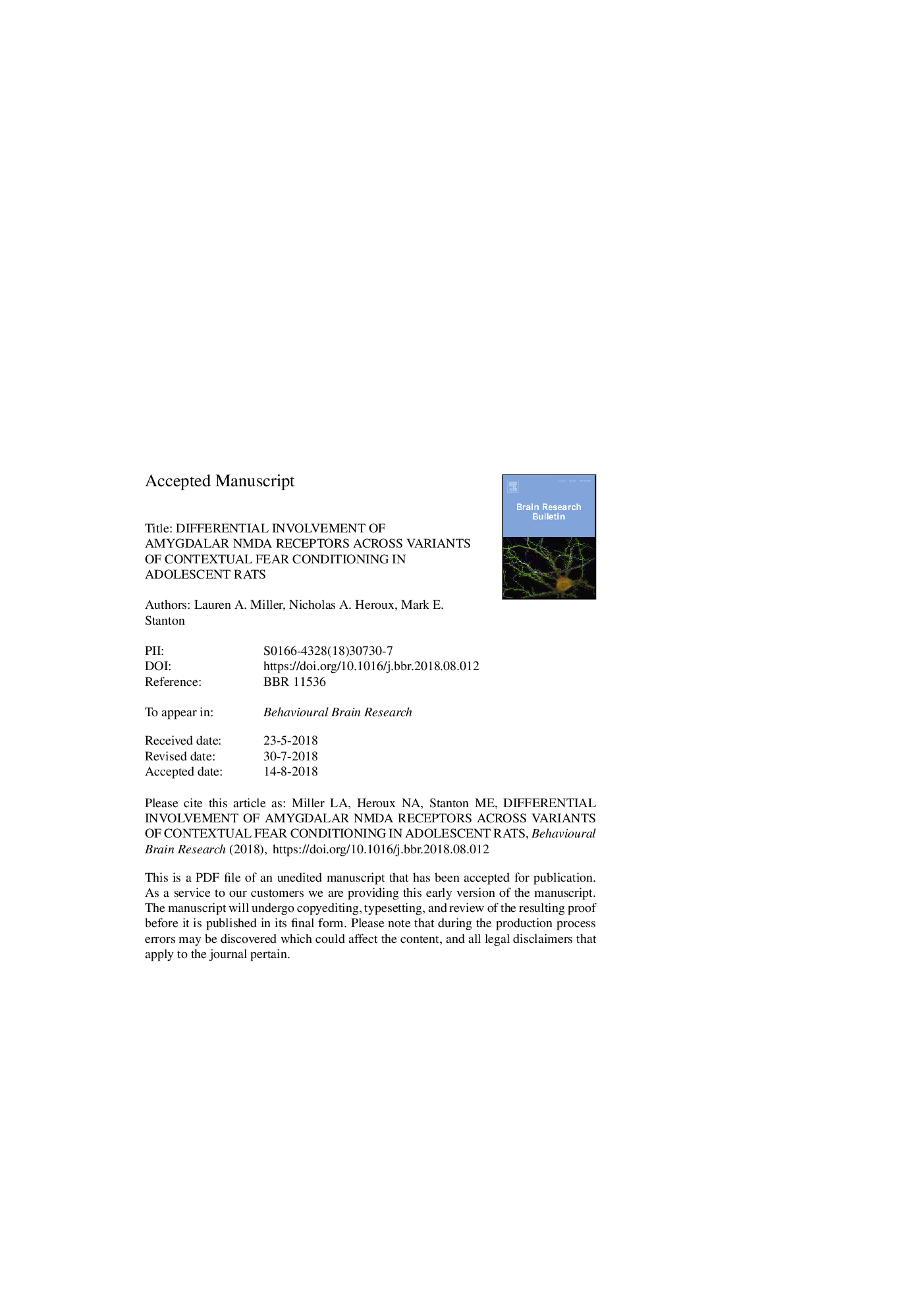| Article ID | Journal | Published Year | Pages | File Type |
|---|---|---|---|---|
| 10138288 | Behavioural Brain Research | 2019 | 31 Pages |
Abstract
In standard contextual fear conditioning (sCFC), learning of the context and formation of the context-shock association occur in the same training session whereas in the context preexposure facilitation effect (CPFE) learning the context (preexposure) and the context-shock association (training) are separated by 24âh. In both procedures conditioned freezing can be measured immediately (post-shock test) or during a 24-hour retention test. In adult rats, disrupting basolateral amygdala (BLA) activity or plasticity during training on sCFC impairs both post-shock and retention freezing [Maren et al, 1996; 1]. This manipulation on the training day of the CPFE disrupts retention freezing but effects on post-shock freezing are unknown [Matus-Amat et al, 2007; 2]. Experiment 1 extended this literature from adult to adolescent rats and to the role of BLA activity and plasticity in post-shock freezing during the CPFE. Intra-BLA infusions of muscimol prior to the training day of the CPFE disrupted both post-shock and retention freezing in Postnatal Day (PD) 31-33 rats. In the second two experiments, intra-BLA infusions of APV prior to the training day of sCFC disrupted retention but not post-shock freezing, while infusions of APV prior to training of the CPFE disrupt both post-shock and retention freezing. Our findings suggest that the BLA plasticity plays a different role in the CPFE vs. sCFC. Its role in the CPFE is similar in both adolescent and adult rats, while the role of the BLA in post-shock freezing during sCFC may differ across age or across studies that employ different procedures or parameters.
Keywords
Related Topics
Life Sciences
Neuroscience
Behavioral Neuroscience
Authors
Lauren A. Miller, Nicholas A. Heroux, Mark E. Stanton,
